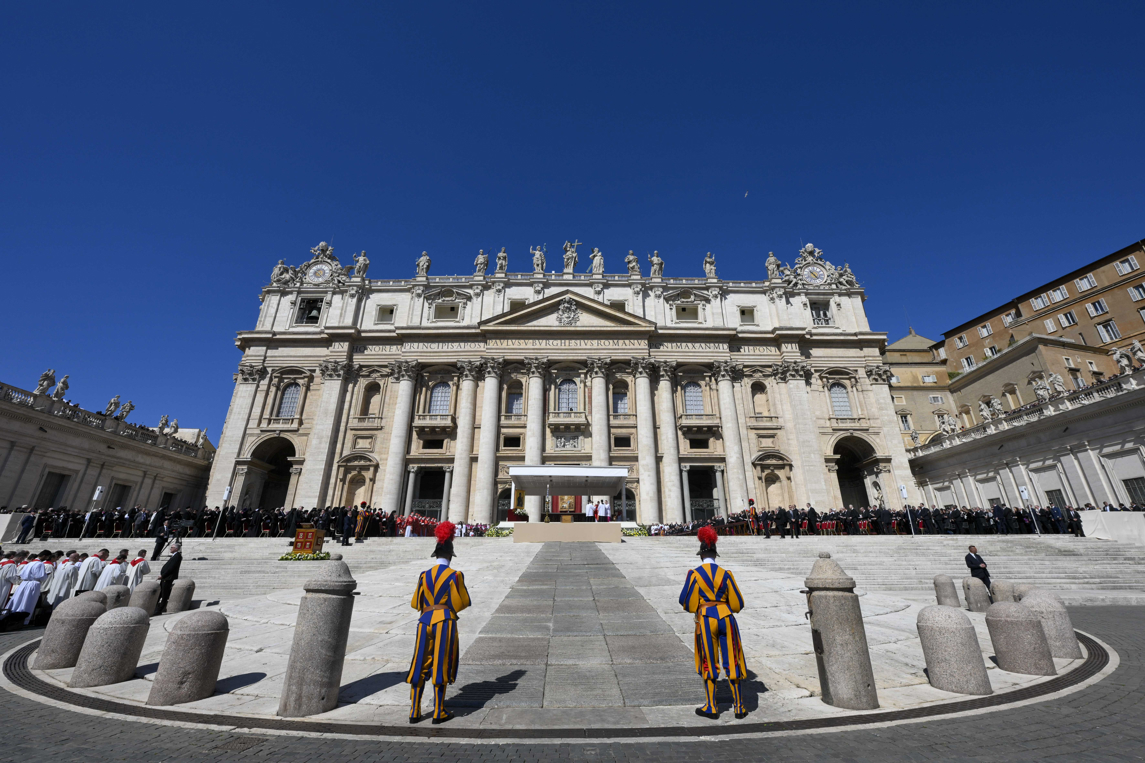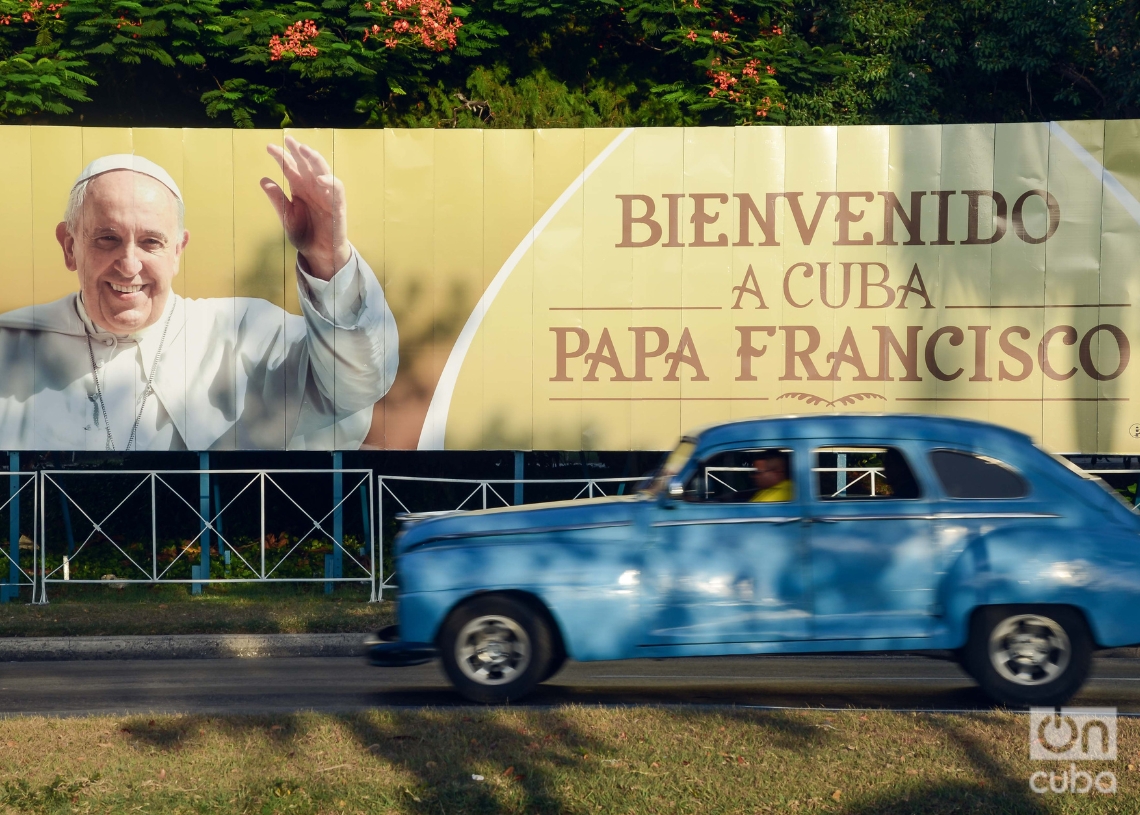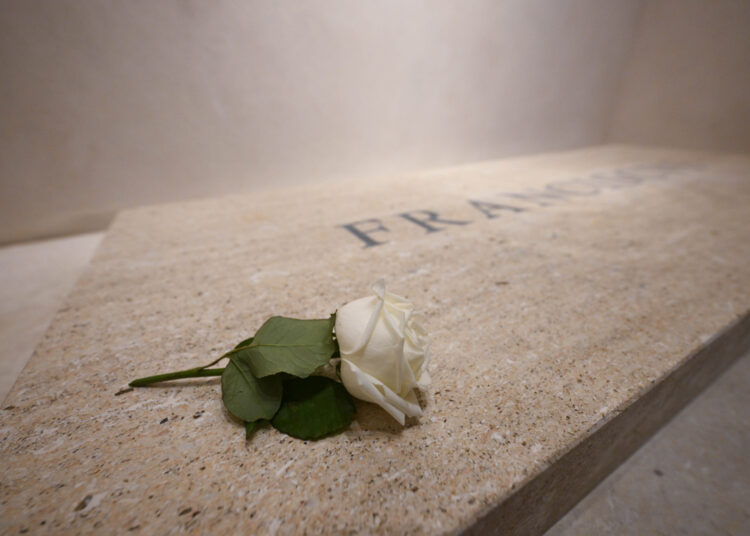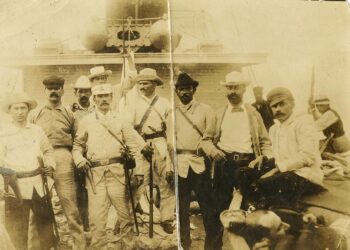In the field of religious studies, no one has carried out more systematic, diverse, and sustained work on the Catholic Church than Aurelio Alonso.
From his first texts in the mid-1960s on Catholic philosophical thought in Europe and his debates with Monsignor Carlos Manuel de Céspedes, through his university courses during the years of dominant atheism, when I was his student, to his reflections on faith in Cuba and Latin America in the 1990s and 2000s, when I had the opportunity to be his editor, I learned that no one understood as he did the keys to the complex relationship between Church and State, and the place of the Catholic faith in Cuban culture, society and politics.
For more than half a century, I have turned to him, seeking to unravel the intricacies of ecclesiastical politics, here and around the world. In order to understand the papacy of Francis in its context, its meaning, outcome, and future, I have burst into the peace of his spiritual retreat, resuming the thread of a conversation where the human and the divine come together.
Ten years ago, in a conversation about the scope of Pope Francis, you commented on the significance of the fact that he would have been the first Latin American pope; and also that he was a Jesuit, in the context of two previous papacies with a rather conservative character. You described him that way at the time. How do you see the balance of what you thought then, in terms of what a new moment in the Church represented, ten years later?
The fact that Francis was Latin American and a Jesuit were two absolute novelties in the history of the papacy. But neither of those reasons alone meant that he would be a progressive pope, either because he was a Jesuit or because he was Latin American. In fact, the majority of the Latin American cardinalate was conservative, aligned with papal decisions that sought closeness and affinity.
It’s important to remember, every time there is a conclave, that those who elect the next pope are, for the most part, cardinals who were appointed by the outgoing pope. This pope cannot create cardinals who only think like him; he also appoints them taking into account the dominant projections in the churches from which those cardinals come.
Currently, as Frei Betto points out in a recent article, Africa is the region where Pope Francis has appointed the most cardinals, reflecting the growth of Catholicism in Africa in recent decades, a growth greater than that of Latin America. However, the Pope has had to consider the composition and projections of the bishops of the local episcopal conferences so as not to appoint cardinals they might reject, which could generate conflicts within the Church. And it is not expected that he do anything like that.
So, according to Frei Betto — who knows far more than I do — the cardinals appointed in Africa are mostly conservative, and many of them are quite distant from the projections the Pope has shown. Nor can we say that Pope Francis was a completely anti-conservative figure.
I had made some predictions in other interviews prior to the one you mention, and also in an article published by Casa de las Américas magazine just after the conclave, when there was doubt about whether he would be a progressive pope or not. Because local situations had arisen in Argentina that led some to think of him as a figure linked to the dictatorship, in its final stages. But since the pope was elected, in that Vatican “democracy” exercised by 115 cardinals in 2013, he decided to call himself Francis.
It should be noted that no pope, until now, had chosen to be called Francis. Throughout the long history of the papacy, names like Leo, Gregory, or John, among others, have abounded. But never had a pontiff opted for the name of the humble Francis of Assisi, the one who challenged the institutional structures that the Church had consolidated during the Middle Ages. Francis founded an order that rejected the traditional monastery model and replaced it with the convent: not a center of feudal power, but a halfway house. A space from which the monk, far from living in seclusion, went forth to preach by his example of poverty and humility.
That choice of the name Francis for a pope meant a lot to me from the beginning, as did all the gestures of breaking with the luxury of papal pomp, which he maintained until the end of his life. Even the decision not to be buried in a crypt of St. Peter’s Basilica, but in the Basilica of Santa Maria Maggiore, a place outside the tradition of papal pomp, was a clear sign of that break. And the simple funeral was also important. I think all this shows how this pope became closer to the poor and the problems of the world.
I would like to return to that 2015 interview, to two challenges within the Church: fraudulent dealings and forms of corruption associated with the sexual conduct of priests; as well as the need for new policies to address these accumulated problems. To what extent can the balance of Francis’s work be connected to your assessments at the time?
It’s very difficult to make a judgment on this without being, to a certain extent, deeply involved in the Church’s problems. Seen from the outside, everything indicates that Francis managed, with his projection, to attenuate or diminish — I don’t know if he eliminated — the problems of corruption, both in the moral, personal and human sense, and with regard to the violation of the vow of chastity, as well as sexual abuse. I don’t think it’s something that can be completely eradicated institutionally. However, it must be acknowledged that he faced these problems without hesitation, without a single muscle trembling in his face. But as long as celibacy exists, there will be motivations for sexual abuse and for distortions of the ethical sense of the Church’s pastoral.
Everything indicates, seen from the outside, that if the Pope didn’t manage to eliminate them, he did attenuate them considerably. The serious financial corruption scandals have also been brought under control. Without looking at it from the inside in their entirety, it’s impossible to know whether what has taken place is an overcoming of these problems or a masking, which he himself may have missed, or to what extent there is one or the other. And it may manifest itself again with a more relaxed policy within the Vatican. It’s very difficult or impossible to predict from the outside. But I think that, among the positive things left by Francis’s papacy, is a certain improvement, at least apparent, of these problems. In addition to others, some more important.
A better understanding of the connection between the political and the social, with the ethical, with the human, as well as a different policy toward nature, one that confronts the blunders committed by humanity against the environment. A whole range of problems on which the Pope’s position has had a positive outcome. I would say “balance,” because there have also been times when the Pope has tried to strike a balance. A very Jesuit style, too.

You mentioned the issue of celibacy. There’s also the Church’s attitude toward the LGBTIQ+ community and toward women’s access to positions previously reserved for priests. Regarding this, to what extent has Francis’s papacy advanced different positions?
I don’t know to what extent these advances are simply rhetorical or truly profound. For example, the appointment of some women to positions or tasks within the Curia does not necessarily imply that an irreversible space for female participation has been opened.
Even so, it is significant that Pope Francis appointed, a couple of months ago, Sister Simona Brambilla as Prefect of the Dicastery for Institutes of Consecrated Life and Societies of Apostolic Life. And, a little earlier, Sister Raffaella Petrini as Governor of Vatican City State, an important, if more administrative, position in which the Curia would have been unlikely to mount any opposition to block it.
On the other hand, in his later years, he appointed Sister Natalie Becquart as the first Undersecretary of the Synod of Bishops, the Pope’s advisory body. She would also become the first voting member of a Catholic synod composed of bishops, priests, and some religious people.
Regarding the LGBTQ+ community, it is true that the Pope showed signs of tolerance; he recognized the legitimacy of their demands, even if he did not support gay marriage. He did not go that far, and perhaps it was premature. Nor do I dare to judge whether, for the balance he has tried to leave of his pontificate and for continuity, it would have been viable.
Now, our eyes must be focused on what will happen, on how the Curia’s election will be, how this conclave will work. It will be extremely important.
Let’s move on to the question of the conclave and the election of the next pope.
According to Frei Betto, it will most likely be an Italian again, after almost half a century.
In the best-case scenario.
In the best-case scenario. According to Frei Betto, it is in Italy where there is a higher proportion of cardinals, among the six newly appointed by Francis; five closely reflect his views. There is also talk of the famous British Dominican Timothy Radcliffe, a theologian very close to his positions.
Who is of an advanced age.
I don’t know if the British cardinal is a theologian of Benedict XVI’s stature, but at least to me, he doesn’t seem so conspicuous a figure that I would think he’s a papal candidate. He’s also a cardinal of a religious order, that is, a Dominican. Normally, Curia are defined by priests of diocesan origin, not religious orders.
I don’t think it’s likely they’ll elect such a young pope, like some candidates from Australia or India, who are under 50. Doing so would mean committing the Church to a pontificate that could last two decades, and that’s too long.
Do you mean the Church tends to prefer papacies that can last no more than ten years?
I think so; the Church seems to be moving in that direction. And if there’s no agreement, the papacy could be even shorter, seeking what’s called a transitional pope, someone who has a great deal of consensus in the Council, but who doesn’t compromise a long pontificate.
Finally, I suggest returning to Francis’s relationship with Cuba, which we discussed in that 2015 conversation. At that time, the normalization process between Cuba and the United States was underway with the Obama administration. As you pointed out, he played an active role in the negotiation process that led to that agreement, paving the way for a normalization process. How was Francis’s relationship with Cuba?
From a political perspective, I believe his relationship with Cuba was the boldest and most positive act he ever took.
Remember that after his first visit, he returned to Cuba, passing through here on a sort of technical stopover, which he took advantage of to meet with the Patriarch of the Russian Orthodox Church, a decisive moment in improving relations between the two churches. On that occasion, he expressed very positive words toward Cuba. He was also the pope of ecumenism, toward the Protestant churches, the Orthodox Church, and other faiths around the world; and even of ecumenism toward the non-believing population.
In general, Francis was a very open pope. If you press me, I’d say he was the most open pope in the history of the Church. Because John Paul II was a pope of renewal, but as someone said, he was a conservative reformer. He wasn’t a progressive man, not even close.
As for Benedict, I think he started out somewhat different, and while I wouldn’t dare say he ended up progressive, he did realize the limitations and vulnerability a pope can have when the Curia is not favorable to him. He realized that, although John Paul II valued him greatly as a theologian, the rest of the curial apparatus didn’t accept many of his opinions and decisions.
So he chose to find a way out in time, and he did it with tremendous grace. Because he was a brilliant theologian, but also a man who knew the workings of the Church like no one else.

Although the two previous popes, Wojtyła and Ratzinger, visited Cuba, Francis was exceptionally visible in his effort to find a solution to the Cuban problem. Because relations between Cuba and the United States involve both parties, but we’re talking about the Cuban problem. And Cuba isn’t so much a problem for the United States as the United States is for Cuba, really.
So Francis took a significant step in contributing to the solution to the Cuban problem. He also had a cardinal who, although not appointed by him, worked in concert with his pontificate: Jaime Ortega. And we must also recognize the positive impact of Ortega’s cardinalate in this regard.
Thank you, Aurelio, for this interview. It has been an opportunity to reflect on fundamental issues we shared ten years ago, and to delve into other equally complex ones, with the lucidity and subtlety of that time. Perhaps more so, I would say. A brilliant opportunity.
[Laughs] Thank you.










